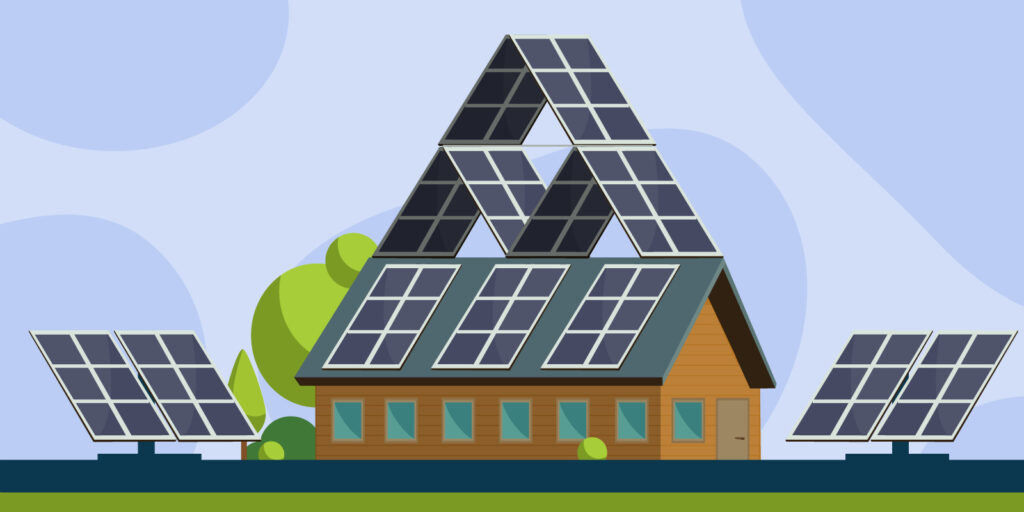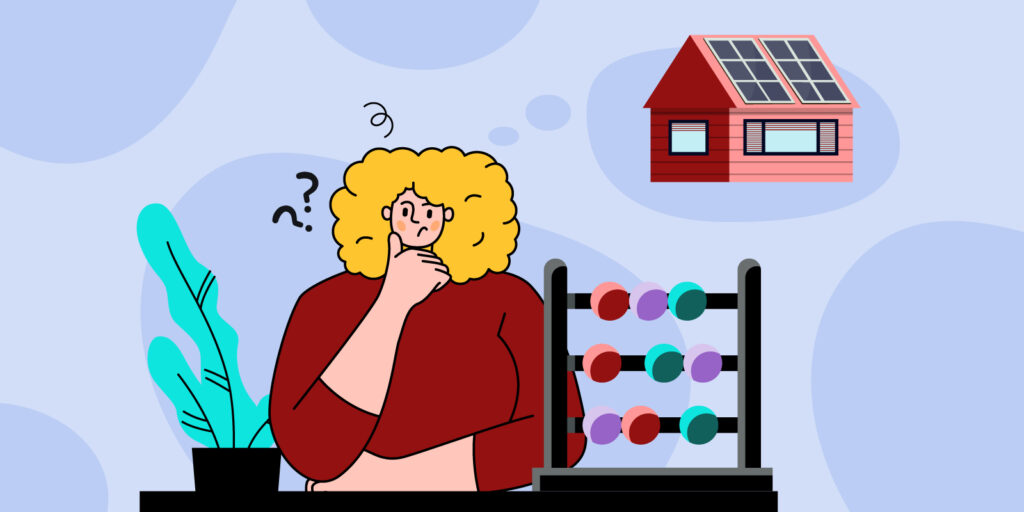As carbon footprints continue to rise, more and more homeowners are converting to solar energy. Not only does solar power support the environment, but it can also reduce your energy bill. However, before you can enjoy the unique benefits of solar energy, you must first answer the question—how many solar panels do I need?
There’s no universal answer when it comes to determining the right amount of panels. Rather, the answer varies depending on everything from your home’s location and size to your energy demands and system quality. When trying to decide on a number, it’s important to calculate correctly — too few panels won’t meet your energy needs, while too many panels will end up wasting money. In this guide, we’ll go over everything you need to know when calculating the optimal number of panels for your home.
Are Solar Panels Right For Me?
Before you start calculating how many panels you need, it’s important to decide whether you would even benefit from solar panels in the first place. While solar systems offer many environmental benefits, not every homeowner can use them. To determine if a solar system is right for you, consider the following factors:
- Location
- Sunlight hours
- Roof direction/angle
Since solar panels use sunlight to create electricity, it’s helpful if you live in a sunny location where they can get direct sunlight. Generally, panels need at least four to five hours of direct sunlight per day to function properly. If you live in an extremely shady area, you may not receive enough sunlight to support panels.
Another element to consider is the angle of your roof. Solar panels work best when installed on south-facing roofs with a slope between 15º and 40º. They can also work on east and west-facing roofs. However, they are generally not recommended for north-facing roofs as they can’t get enough sunlight to produce the needed energy.
After evaluating your location, weather conditions and roof orientation, you can better determine whether you will be able to effectively use solar panels for your home at all. Once you’ve decided that solar will work for your home, you’re ready to start calculating the number of panels you’ll need. There are two ways to do this: by looking at general estimations and by making your own calculations.
Choosing The Right Number Of Panels

You can get an idea of how many solar panels your home needs by accessing estimations online. For example, data from the U.S. Energy Information Administration’s Residential Energy Consumption Survey provides the following estimations based on home size:
- 1,500 sq. ft.: 14-17 panels
- 2,000 sq. ft.: 19-25 panels
- 2,500 sq. ft.: 24-30 panels
- 3,000 sq. ft.: 27-30 panels
It’s important to emphasize that these are general figures based on data collected on average homeowners and may not be applicable to your household. While you can use them as a guideline, you should also make your own calculations.
Calculating Solar Panels For Your Home
Calculating the number of solar panels you need requires a little bit of work. However, you’ll be rewarded for your efforts with a more accurate total. Here’s a step-by-step guide to help you get the most accurate data.
1. Look At Your Power Bill
Before installing solar panels, you will have to get an idea as to how much energy you consume within a given period. In 2021, the average U.S. residential utility customer consumed about 10,632 kWh over the year, or 886 kWh per month. This means the typical homeowner will need panels that can support around 900 kWh every month. To determine your own figure, find the number of kilowatt-hours you’ve consumed over the past year, which can be found on your energy bill. Divide that number by 12 to get an estimate of how much energy you use on a monthly basis.
You can break down this number further by calculating both your daily and hourly energy consumption. To get your daily amount, divide your monthly usage by 30, or the number of days in a month. Then, divide this figure by 24 to determine your hourly usage. If you use 900 kWh per month, your daily and hourly power consumption will be 30 kWh and 1.25 kWh, respectively. To convert these figures to watt-hours (wH), just multiply them by 1,000.
2. Determine Your Peak Sunlight Hours
While your energy bill can help you arrive at a reasonable estimate of how many solar panels you need, it’s not entirely accurate on its own. This is because your energy needs vary greatly depending on how much direct sunlight your home gets. Solar panels create energy by absorbing sunlight through photovoltaic (PV) cells — the more direct sunlight your home receives, the more effective each panel will be. On the flip side, if you don’t get much direct sunlight, you’ll need a higher quantity of panels to make up for it.
The easiest way to figure out your direct sunlight amount is by looking up the peak sunlight hours for your region. You can then divide your daily wattage requirement by your peak sunlight hours to determine how much energy your panels must produce every day. So, say you use 30 kWh (or 30,000 wH) per day and live in an area that gets five peak sunlight hours — you’ll need enough solar panels to produce at least 6,000 (30,000/5) watts per day.
3. Consider Your Solar Panel Quality
Now that you know the number of watts you need per day for your home, you might be wondering: how many panels does that equal? The answer to this question depends largely on the quality of your system. Panels can be divided into two main types: conventional and premium. Conventional panels are more affordable but can only produce up to 100 watts of power (with direct sunlight). Premium panels, meanwhile, generally produce around 300 to 400 watts when charged.
To get your optimal panel amount, divide the number of watts you need by how many watts your panels can produce. So, if you need at least 6,000 watts per day, and you’re installing premium panels capable of producing 300 watts, you’ll need at least 20 (6,000/300) panels. It’s important to remember that solar panels will not always generate the maximum number of watts — for example, on cloudy days, panels may only generate around 10-25% of their normal output. To stay on the safe side, you should add a few more panels to your minimum amount.
What Happens If I Don’t Have the Right Number of Solar Panels?
As mentioned earlier, it’s important to calculate your ideal number of solar panels as accurately as possible. If you don’t have enough solar panels, you won’t be able to support your electricity demands throughout the day. Meanwhile, if you have too many, you’ll end up paying for, and potentially generating power you’re not using. If possible, have your own calculations confirmed by a reputable solar technician. With the optimal number of panels, you can enjoy quality solar energy for years to come.
You might also be interested in: The Top 12 Reasons To Switch To Solar Energy Today




